15 Vintage Apothecary Bottles That Collectors Pay Top Dollar For
Old apothecary bottles remain popular because they blend charm, history, and eye catching detail in a way few other antiques can. Their shapes and colors reflect the careful work of early glassmakers who created each piece with simple tools. Many bottles still show embossing or subtle imperfections that make them feel personal and unique. Some were used for tonics while others held pharmacy mixtures that shaped the way people cared for themselves long ago. Each bottle adds quiet character to a collection and invites you to imagine the counter where it once sat.
This post may contain affiliate links, which helps keep this content free. Please read our disclosure for more info.
Cobalt Blue Poison Bottle

Cobalt blue poison bottles remain a favorite among collectors because their deep color and unusual shapes make them stand out in any display. Many were designed with textured surfaces and raised warnings to prevent accidental use during the nineteenth and early twentieth centuries. These visual cues give the bottles strong historical charm that buyers appreciate.
Collectors search for examples that retain sharp details, original stoppers, and minimal wear. Bottles with embossed skulls or rare manufacturer marks often bring stronger prices. Many sell anywhere from $80 to $250 depending on size, embellishments, and condition.
Amber Bitters Bottle
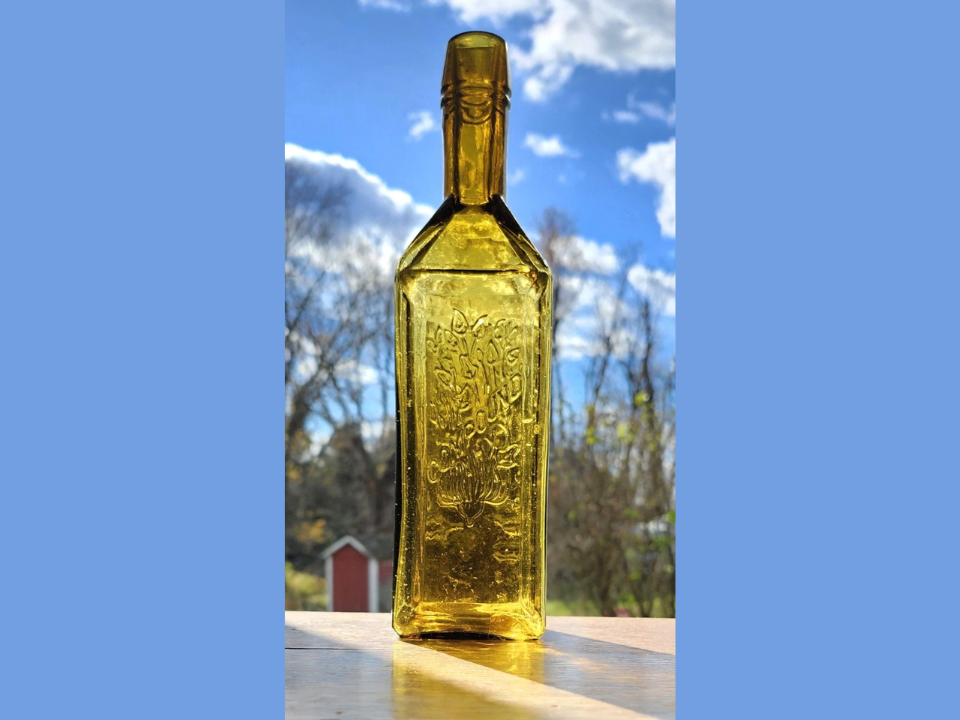
Amber bitters bottles often feature embossed lettering and tall angular forms that help them stand apart from typical medicine bottles. Their warm shade of glass adds a nostalgic feel, which increases their appeal. Some examples come from small regional makers which adds another layer of interest.
Collectors enjoy bottles that still show crisp embossing and unusual shapes. Scarcer embossed motifs or intact labels tend to raise the value. Prices typically land between $60 and $200 for clean, well-kept examples.
Pontil Marked Green Apothecary Bottle
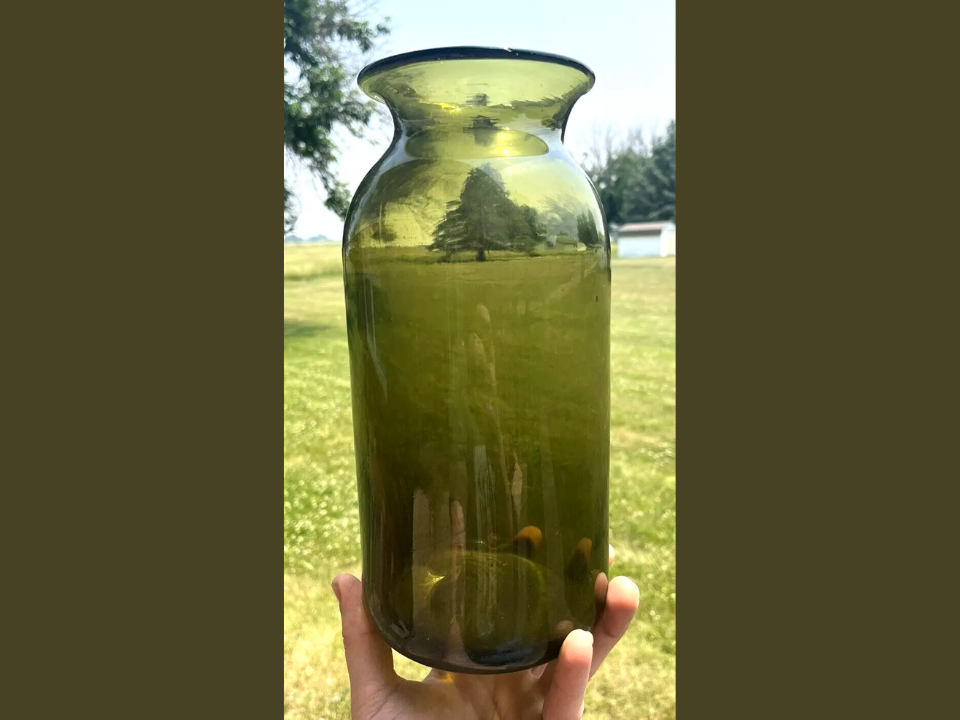
Pontil marked apothecary bottles show evidence of handblown production, which adds value for collectors who enjoy early glasswork. The green tint came from natural minerals within the sand used to create the glass. Many of these bottles date back to the mid-nineteenth century.
Collectors look for smooth pontil scars and signs of early workmanship. Bottles with original glass stoppers or applied lips attract stronger interest. Market values usually fall between $150 and $350 depending on rarity.
Cathedral Style Panel Bottle

Cathedral style bottles have decorative arches and panels that recall the look of stained glass windows. Many were used for tonics and household mixtures during the Victorian era. Their architectural look makes them popular display pieces in modern collections.
Examples with crisp panel lines and uniform coloring tend to bring higher bids. Larger sizes and unique shades such as deep olive can increase value. Common selling prices fall between $90 and $250.
American Sunburst Bottle
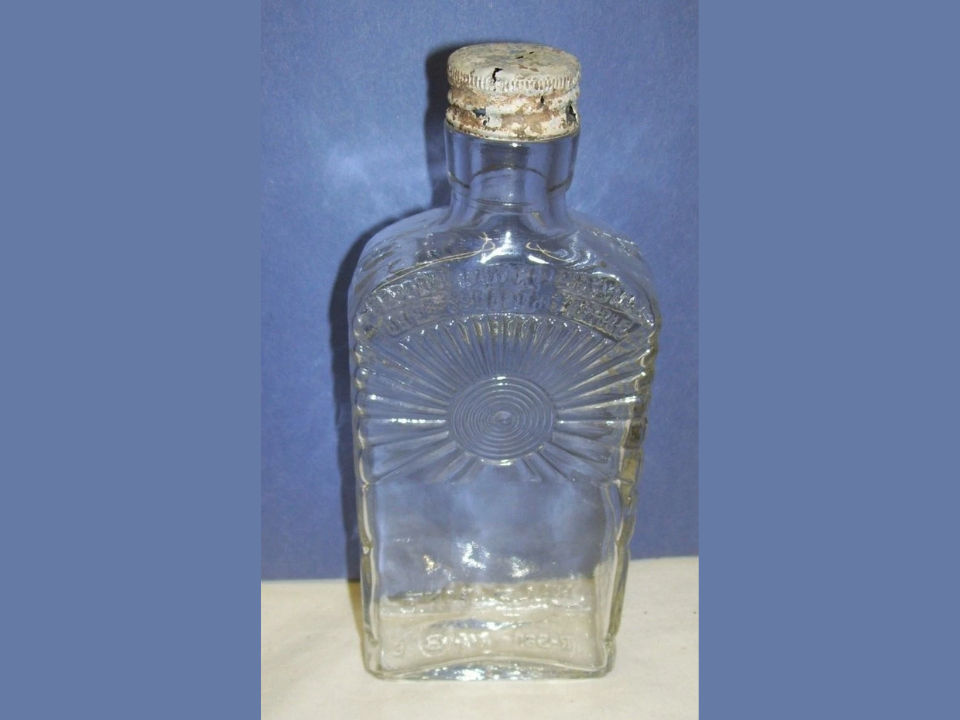
Sunburst bottles feature raised radial patterns that give them a striking look. Many date back to the early to mid-nineteenth century and were created with handblown techniques. Their texture catches light in a way that draws interest.
Collectors show strong interest in pieces with bold patterns and clean surfaces. Bottles with applied lips or pontil marks tend to bring higher amounts. Values typically range from $200 to $600 depending on rarity and design strength.
Labelled Chemist Bottle
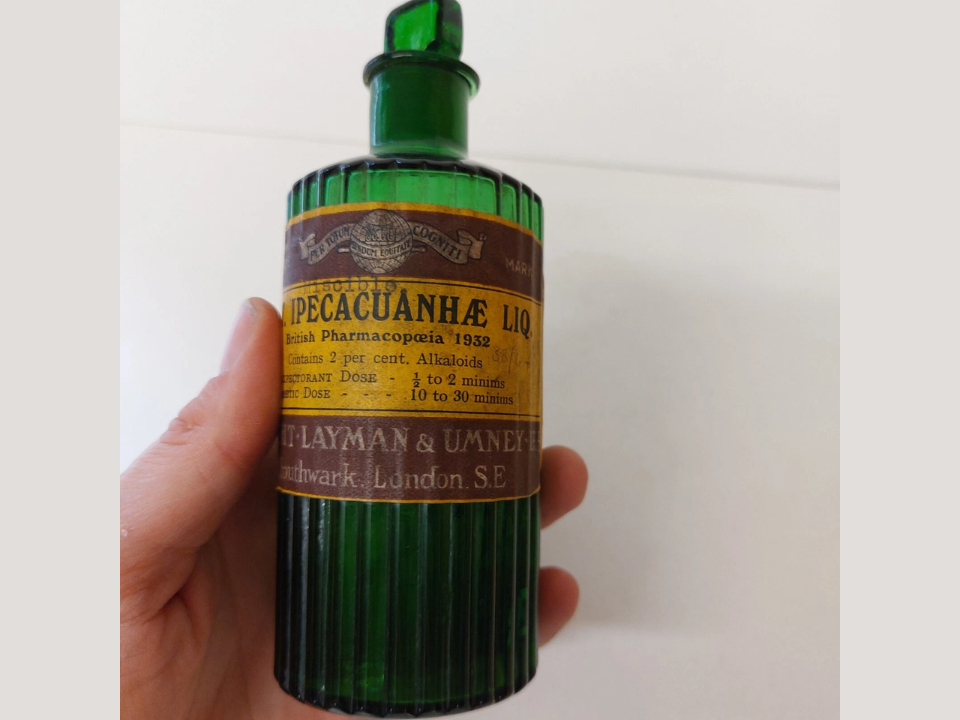
Chemist bottles with original paper labels hold strong collector interest due to their connection to specific drugstores or physicians. Surviving labels add personality and often display beautiful typography or decorative borders. The combination of glasswork and printed design creates a distinctive collectible.
Bottles with clean labels and legible text sell better than those with fading or large stains. Examples from small towns or short-lived pharmacies often attract higher bids. Typical market values range from $60 to $180.
Uranium Glass Apothecary Bottle

Uranium glass bottles have a pale green or yellow tint that glows under ultraviolet light, which makes them favorites for collectors who enjoy unusual glass. Many were used in pharmacies during the late nineteenth and early twentieth centuries. Their gentle color and luminous quality give them a striking presence on a shelf.
Collectors prefer bottles with smooth surfaces and tight seams. Examples that contain original stoppers or etched measurements tend to bring higher offers. These bottles generally sell for $120 to $350 depending on size and glow strength.
Clear Glass Poison Bottle with Ribbed Sides
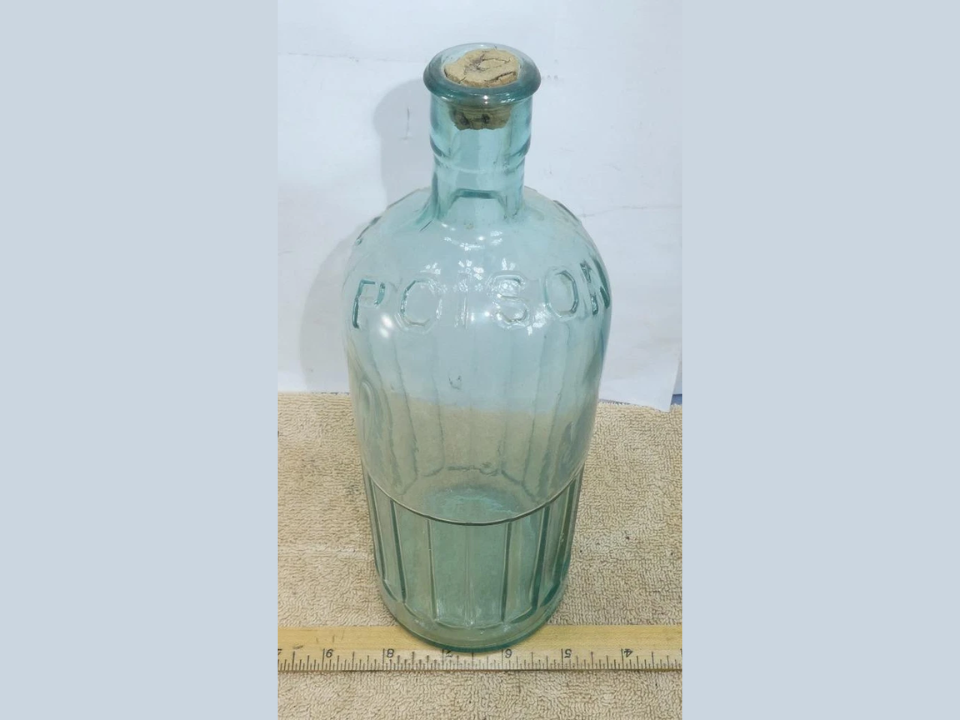
Ribbed poison bottles were designed with tactile warnings so people could identify them even when lighting was poor. Many early examples feature bold embossing across the front panel. The clear glass allows the shape and details to stand out, making them easy to identify.
Collectors value bottles with crisp ribs and clean glass. Rare shapes or unusual embossing patterns often attract stronger attention. Market values range from $50 to $150 in most cases.
Carbolic Acid Bottle with Original Stopper
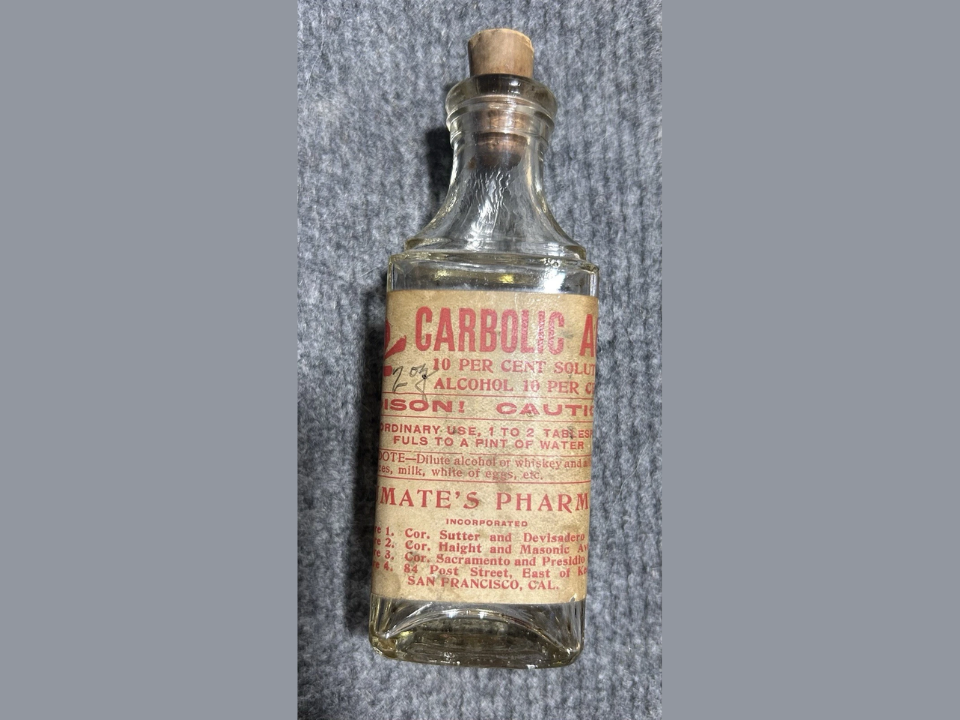
Carbolic acid bottles often have strong embossing that makes them easy to recognize. Many examples were made with dark glass to reduce light exposure, and the bottle shapes vary widely by maker. The original stopper adds charm and authenticity which increases interest.
Collectors appreciate bottles with minimal wear and clear lettering. Examples linked to early pharmaceutical companies tend to sell faster. Values typically fall between $80 and $200.
Paneled Veterinary Medicine Bottle
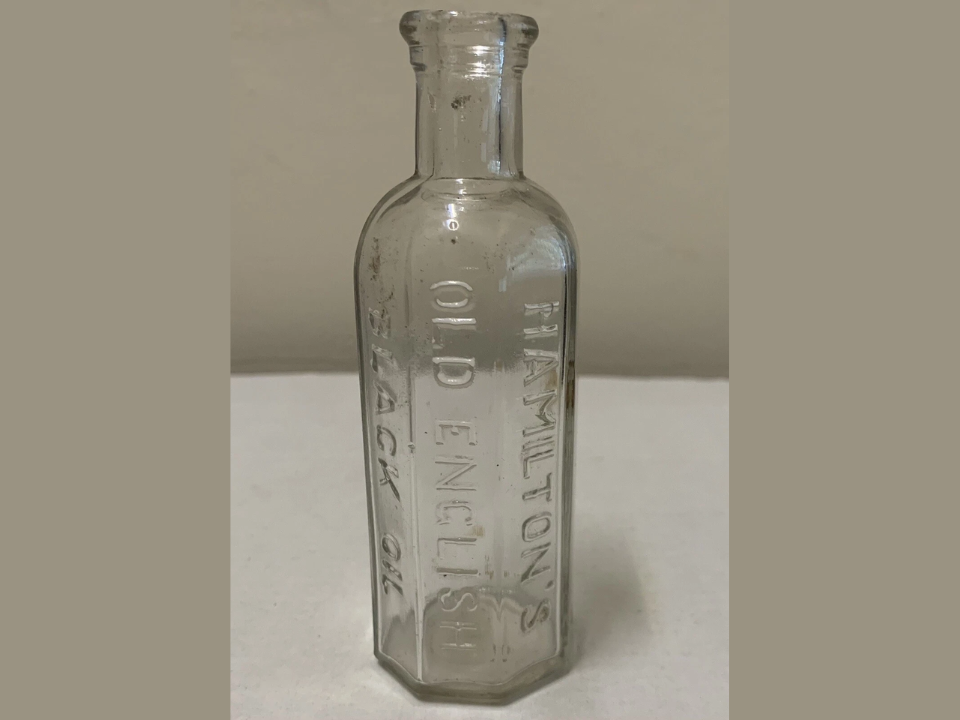
Veterinary bottles hold interest because they show how animal care developed during the nineteenth and early twentieth centuries. Many have broad panels that display embossing or labels tied to farm supply stores. Their shapes and colors vary, making them enjoyable to collect.
Collectors look for pieces with detailed embossing or unusual shapes. Some bottles linked to rare regional brands can bring stronger bids. Market prices generally run from $40 to $120.
Embossed Pharmacy Dose Bottle
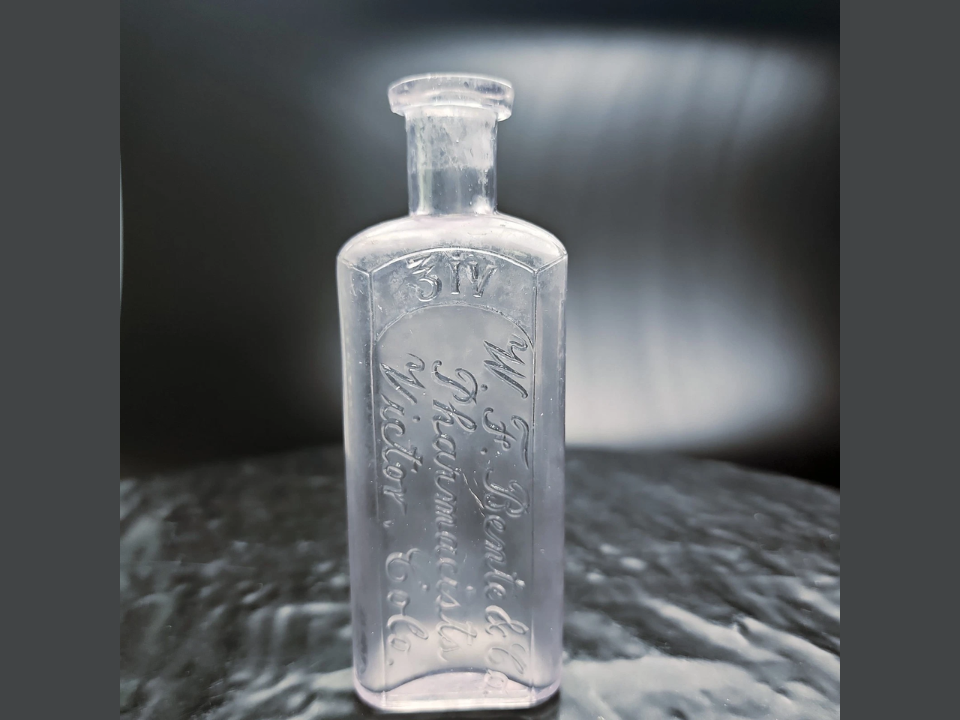
Dose bottles were used by pharmacists to give exact amounts of medicine to customers. Many include raised measurement lines and unique shapes that reflect their practical purpose. Their small size makes them easy to display in groups.
Collectors prefer bottles with fully readable measurements and even coloring. Examples with clear maker marks or rare shapes tend to sell at higher levels. Prices often range from $30 to $90.
Figural Apothecary Bottle
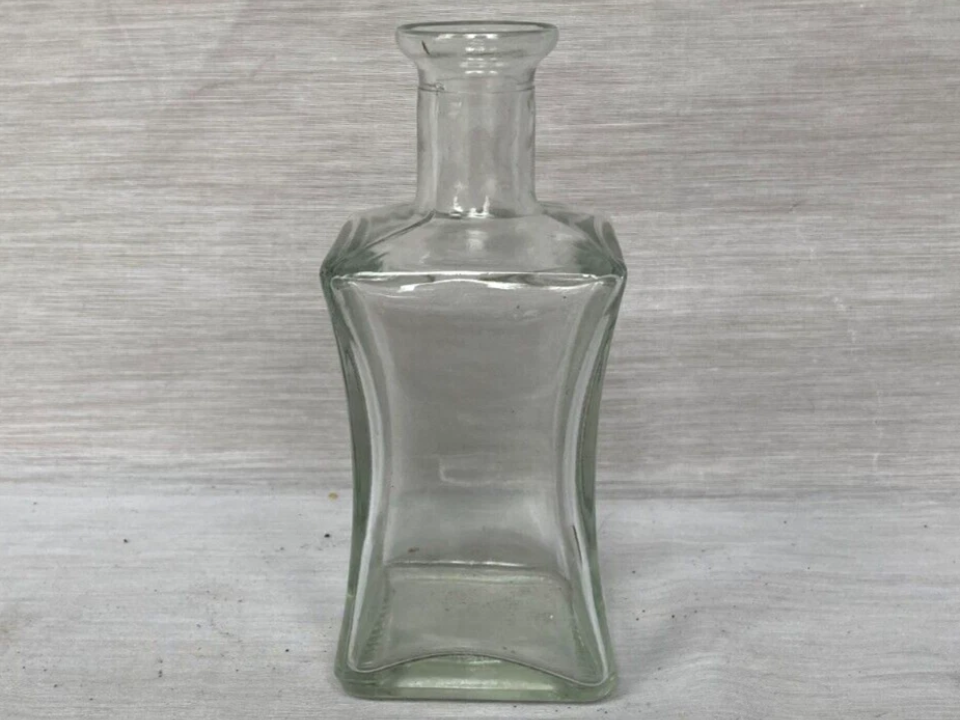
Figural bottles were formed in shapes inspired by people, animals, or symbols related to health or medicine. These playful designs helped certain brands stand out. Many were hand finished which adds interest.
Collectors enjoy bottles with bold shapes and undamaged detailing. Scarcer forms, such as animals or myth inspired figures, often bring stronger attention. Values usually fall between $100 and $300 depending on subject and condition.
Black Glass Medicine Bottle
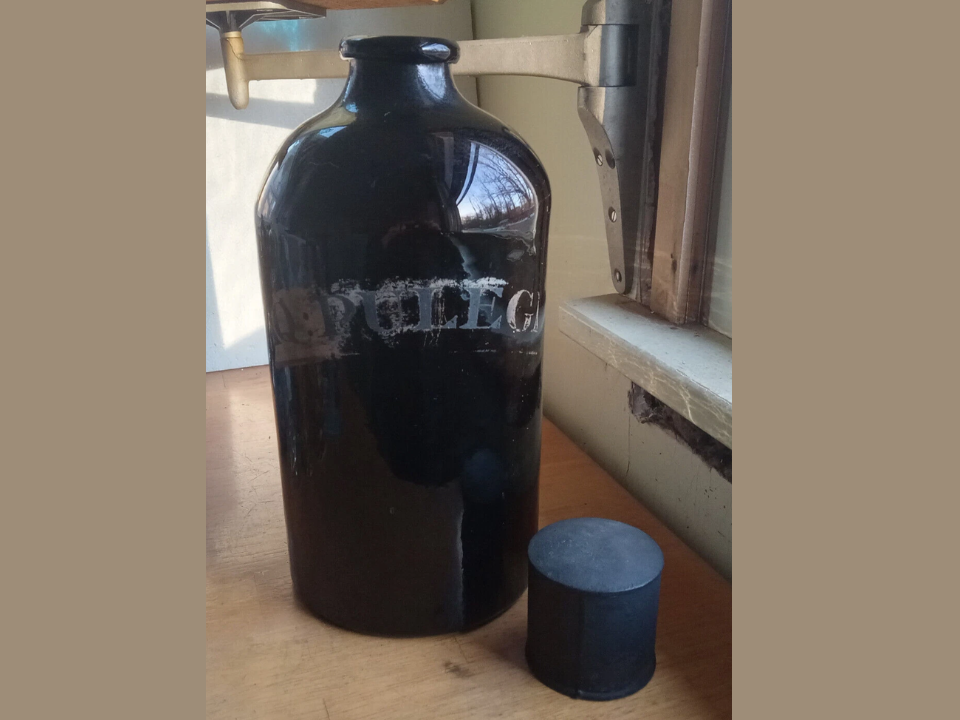
Black glass bottles were made with dense, dark materials that block light entirely. This helped protect sensitive liquid medicines during long storage. Their heavy look and uncommon color make them desirable for many collectors.
Examples with smooth seams and strong embossing perform well in the market. Bottles linked to known apothecaries or shipped medicines tend to draw higher prices. Many sell between $80 and $250.
Applied Lip Druggist Bottle

Applied lip bottles feature rims that were hand shaped during production, which gives each one small variations. This technique was common before machine production increased early in the twentieth century. The handmade quality adds charm and character.
Collectors pay closer attention to pieces that show even shaping and smooth surfaces. Bottles with embossed pharmacy names or locations raise interest. Usual values fall between $60 and $160.
Opium Cure Bottle

Opium cure bottles were produced during a time when many remedies contained ingredients no longer used today. Their history attracts collectors who find these pieces fascinating reminders of outdated medical practices. Many are embossed with brand names that hint at strong marketing of the era.
Collectors prefer examples with clean surfaces and faint traces of original labels. Smaller bottlers or rare town names tend to bring stronger bids. These bottles often sell from $70 to $180.
This article originally appeared on Avocadu.
